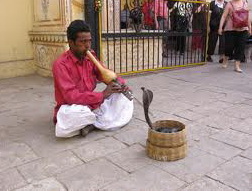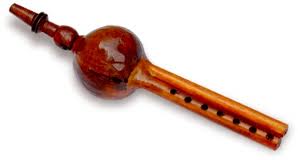 Cobra is a poisonous reptile. People are afraid of cobra because of it’s venom. Death is guaranteed if poison enters the blood circulation and it is only the anti-snake venom serum that can neutralize it. The same has to be injected in certain intervals and should be injected intravenously. In spite all the dangers and it’s venom, cobras are worshipped throughout the length and breadth of India. It is a unifying factor in India. I would not like to go into the history of snake worshipping in India though it is mentioned in all the mythologies including the ancient scriptures, that is Vedas. Most of the kings used to have on their crown the symbol of hood of the snake, perhaps it represented power. Indian religion has been very generous in its philosophy. It has made provisions for the rivers, trees, mountains and many other natural objects. To worship a snake falls in this philosophy. For the Snakes, the most important celebration is the Naag Panchami. Even it has a Goddess Manasa associated with it. The Goddess is worshipped chiefly for the prevention and cure of snakebite and also for fertility and prosperity. In Bengal they pray Manasa Goddess for the longer life of the Lady’s husband and son.
Cobra is a poisonous reptile. People are afraid of cobra because of it’s venom. Death is guaranteed if poison enters the blood circulation and it is only the anti-snake venom serum that can neutralize it. The same has to be injected in certain intervals and should be injected intravenously. In spite all the dangers and it’s venom, cobras are worshipped throughout the length and breadth of India. It is a unifying factor in India. I would not like to go into the history of snake worshipping in India though it is mentioned in all the mythologies including the ancient scriptures, that is Vedas. Most of the kings used to have on their crown the symbol of hood of the snake, perhaps it represented power. Indian religion has been very generous in its philosophy. It has made provisions for the rivers, trees, mountains and many other natural objects. To worship a snake falls in this philosophy. For the Snakes, the most important celebration is the Naag Panchami. Even it has a Goddess Manasa associated with it. The Goddess is worshipped chiefly for the prevention and cure of snakebite and also for fertility and prosperity. In Bengal they pray Manasa Goddess for the longer life of the Lady’s husband and son.

If ever one travels to this part of the country, which is called as Tulu Nadu or place of people speaking Tulu language, that is in the south western part of India, during the months between December and April, they will obviously come across in some villages or even in towns people worshipping cobra which is called as Nagaradhane in a Nagamandala. That is a form of ritualistic dance form performed by the people of a particular community called Vaidyas and it is performed by two priests. The first priest is called as Patri and the second priest is called as Nagakannika or female snake. The male Patri inhales areca flower and becomes possessed as male snake. It is believed that the said flower has intoxicating effect when inhaled and rubbed on their face in large quantity. They dance to the beats of an instrument called dhakke or an hour glass shaped instrument ( also called as dhamaru ) around a circle which is a serpent design and is formed with five colour combination on a sanctified ground. The colour material used are made of yellow by turmeric, White by white mud or jady mannu, green with powder made of leaves, black by burnt out paddy husk and red by the combination of lime powder and turmeric powder. The patri gets possessed somewhere in the middle of the ritual signifying the presence of the serpent spirit among the devotees The ritual is vibrant and extended whole night till early in the morning, which represents the divine union of female and male snakes. It is an very expensive ritual and lot of preparation is required including several types of items have to be procured for the worship. It is the feudal class of this part who perform Nagamandala, because of it’s sheer exorbitant expenses and various strict rules to be observed.

The cobras are therefore worshipped by hindus all over the country in their own ritualistic style while in Tulu Nadu it has it’s own significance. There are separate shrines for cobras which are called as Nagabanas or groves for snakes. Bana means a grove. It is surrounded by trees with a peepal tree in the middle. These Nagabanas or snake groves are protected. These groves can be seen either in the middle of paddy fields or in the garden lands. It is believed that snakes rest in these groves. They are very cool places because of lot of shade and due to the cultural ban against defiling or harming these areas, the snakes find that a safe place to reside. People are not allowed to cut these trees and the sanctity of the place and the trees standing therein are protected jealously by the people. One can always find snake images carved on granite stones at the foot of these trees. It is a reminder for the people not to defile that area. It is also a deity to be worshipped on a particular day of every year, apart from any other days. That day is called Nagara Panchami which falls on the fifth day of Shravan in ( the month of July-August) the Hindu calendar is celebrated as Nag Panchami. Women worship the snake images and the peepal tree for progeny and it is symbol of fertility The trees are thus protected and hence no one can cut it and cutting or felling it tantamount to killing of a brahmin.. In spite of all these beliefs, people of Tulu nadu in the name of renovating the area of Nagabanas have started clearing the area of trees and medicinal plants which usually one could find around these bana or grove is now replaced by temples for temple gods.
Undoubtedly cobra is a highly venomous snake. It feeds on rodents, lizards, and frogs therefore. it is considered as farmer friendly. It can attack or defend itself. The snake actually forces the venom through its fangs.. In its characteristic threat posture, the Indian cobra raises the front one-third of its body and spreads out its long, flexible neck ribs and loose skin to form a disklike hood, on the back of which there are markings resembling eyes. King cobras can reach 18 feet (5.5 meters) in length, making them the longest of all venomous snakes. When confronted, they can raise up to one-third of their bodies straight off the ground and still move forward to attack. They will also flare out their iconic hoods and emit a bone-chilling hiss that sounds almost like a growling dog. It is this nature in them that is exploited by snake charmers to regale the audience.


People often wondered how snake charmers make the deadly cobras sway to the tune of their pungi music. Pungi is a traditional folk musical instrument used by snake charmers of India. Actually the cobra is deaf to the snake charmer’s pipe, but follows the visual cue of the moving pipe and it can perhaps sense the ground vibrations from the snake charmer’s tapping.
In spite of all these characteristics of snake, it has niched a place in the social and cultural life of this part of the country. Therefore snakes are looked upon both with awe and fear. Hardly there ia a household in this part of the country where people directly or indirectly would like to harm any cobra. If by chance it enters their garden or house, it is made to leave the place by offering milk and kum kum or vermillion powder and it is shown the door. Nobody would kill it as it is feared that, if harmed, the cobra will strike back with a vengeance and will be after the family for generations together.
